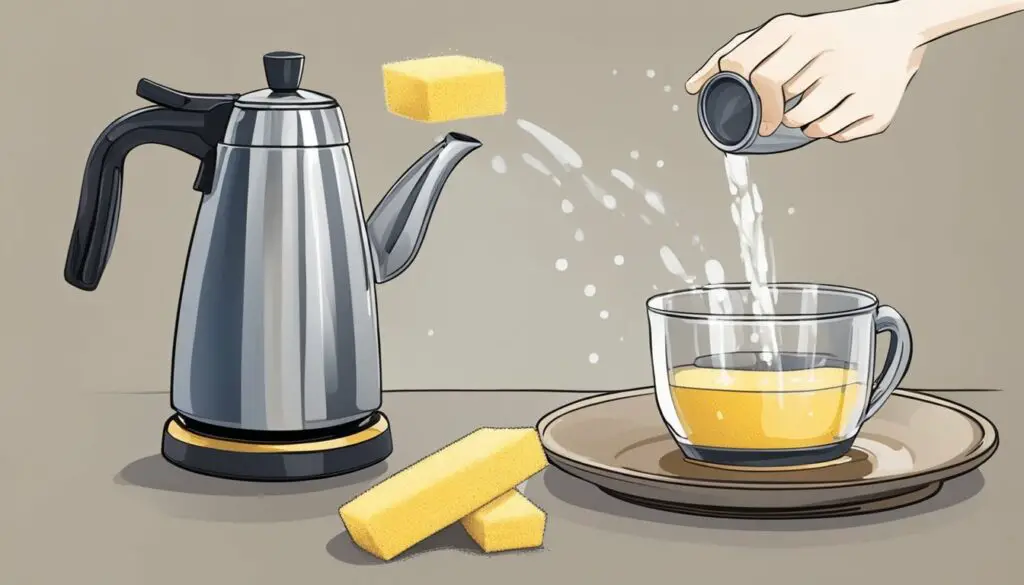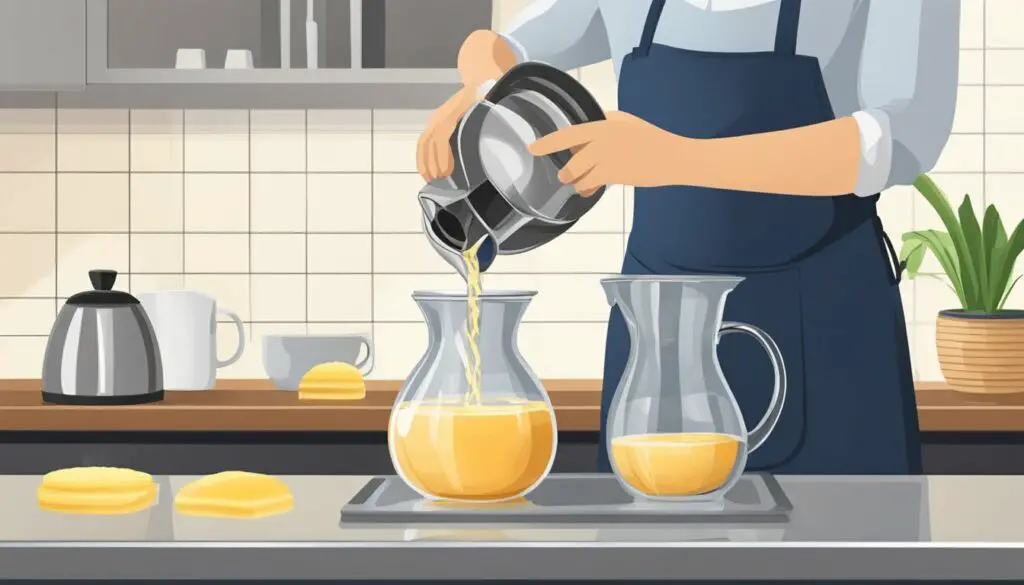Maintaining the gleaming appearance and optimal performance of your stainless steel coffee carafe requires regular cleaning.
Over time, coffee oils and residues can accumulate, impacting not only the taste of your coffee but also the longevity of the carafe.
Whether it’s a daily rinse or a more thorough weekly cleaning, establishing a simple routine can help keep your carafe in pristine condition.

Addressing tough stains and mineral build-up might seem daunting, but don’t worry; there are effective and natural cleaning solutions you can employ.
Using household items like baking soda, vinegar, or lemon juice, you can safely and efficiently tackle those stubborn spots.
With the right approach, you can ensure that your stainless steel coffee carafe remains a shiny and functional centerpiece of your coffee ritual.
Key Takeaways
- Regular cleaning keeps your coffee carafe shiny and functional.
- Safe, natural ingredients can effectively address tough stains.
- Establishing a cleaning routine ensures longevity for your carafe.
Preparation for Cleaning
Before diving into the scrubbing and shining of your stainless steel coffee carafe, you’ll want to make sure you’ve got everything you need on hand and understand the disassembly process—if necessary—to clean each part thoroughly.
Gathering Necessary Materials
Here’s what you’ll need to round up:
- Warm water: You’ll use this to rinse and mix with other cleaning agents.
- Dish soap: A good degreasing agent for general cleaning.
- Vinegar: If you’re opting for a deep clean or descaling.
- Sponge or brush: For scrubbing away the coffee residue inside the carafe.
- Paper towels: Useful for drying and wiping down the exterior.
- Bottle brush: Perfect for reaching into those narrow spaces.
- Optionally, a dishwasher pod if you prefer using the dishwasher for certain parts.
Quick Checklist
| Materials | Check |
|---|---|
| Warm water | [ ] |
| Dish soap | [ ] |
| Vinegar | [ ] |
| Sponge or brush | [ ] |
| Paper towels | [ ] |
| Bottle brush | [ ] |
| Dishwasher pod | [ ] |
Disassembling the Carafe
If your carafe comes apart, here’s how to do it safely:
- Lid: Start by removing the lid. Twist it off if it’s a screw-on type or just pull it off if it snaps on.
- Filter basket (if applicable): Pop out the filter basket if there’s one inside.
- Any removable parts: Look for any parts that are designed to come off, like a base or handle, and carefully detach them.
Check your carafe’s manual for any specific disassembly instructions to avoid damage. Exact cleaning steps will often depend on the brand, build, and make of the carafe you’ve purchased.
Routine Cleaning Methods

Keeping your stainless steel coffee carafe clean ensures your coffee tastes great and your carafe lasts a long time.
Use these simple methods to tackle everyday grime and to maintain the shine of your carafe.
Using Dish Soap and Water
Begin by filling your carafe with warm water and a squirt of dish soap.
Swirl the solution around to make sure it touches all parts of the carafe.
For stubborn stains, use a sponge or brush gently.
Once you’ve scrubbed it clean, rinse thoroughly with hot water to remove any soap residue.
Applying Vinegar Solution
If you notice lingering odors or hard water deposits, a vinegar solution can help.
Fill the coffee carafe with a mixture of equal parts white vinegar and water.
Let it soak for 30 minutes, then rinse thoroughly with hot water.
For an effective coffee maker cleaning, run this vinegar solution through a brewing cycle, followed by a cycle of just water to rinse it out.
Leveraging Baking Soda
Baking soda is excellent for removing tough stains.
Create a paste with baking soda and a little bit of water, then apply it directly onto any stains in the carafe.
Let it sit for a few minutes before scrubbing gently with a sponge.
Rinse your carafe out with warm water.
For a deeper clean, you can also mix baking soda with water and let it soak before rinsing.
Addressing Tough Stains and Build-Up

When your stainless steel coffee carafe is plagued by tough stains and mineral build-up, a regular wash might not cut it.
You need targeted solutions that tackle stubborn coffee residues and hard water deposits without damaging the carafe.
Tackling Stubborn Coffee Stains
Stubborn stains, mainly from the coffee residue, can be a nuisance. But there’s a simple duo that works wonders:
- Hydrogen Peroxide and Baking Soda:
a. Sprinkle baking soda inside the carafe.
b. Add a small amount of hydrogen peroxide to create a paste.
c. Scrub gently with a non-abrasive sponge.
d. Rinse thoroughly with warm water.
Removing Hard Water Deposits
Hard water can leave behind mineral deposits that make your carafe look dull. Combat this with common kitchen ingredients:
- Vinegar Solution:
- Fill the carafe with equal parts white vinegar and water.
- Allow it to soak for 30 minutes, then rinse.
- Ice and Salt Method:
- Fill the carafe with ice cubes and a tablespoon of salt.
- Swirl the mixture around until the deposits loosen.
- Rinse well with warm water.
Final Steps and Maintenance

Now that you’ve tackled the inside of your carafe, it’s time to put on the finishing touches to ensure it sparkles and stays fresh for your next cup of coffee.
Rinsing and Drying
After giving your stainless steel carafe a good scrub, rinse it thoroughly with warm water to remove any cleaning agent residues, be it vinegar or soap.
You want to make sure that none of these substances are left behind, as they could affect the taste of your coffee.
Dry your carafe completely with a soft dish towel, or to avoid water spots, let it air-dry upside down on a dish rack.
Preventing Future Stains and Odors
Prevention is key to maintaining a clean thermal carafe:
- Regular Cleaning: Even if it doesn’t look dirty, give your carafe a light hand wash after each use to prevent buildup.
- Stainless Steel Cleaner: For a deeper clean, occasionally use a cleaner designed for stainless steel. This cleaner will not only help with removing coffee stains but also polish the surface.
- Natural Methods: Between uses, consider storing your carafe with the lid off to air out any odors.
- Avoid Harsh Chemicals: Stick to gentle cleaners as harsh chemicals could damage the stainless steel over time.
We want to remind our readers that the articles or content found on afullmug.com do not constitute nor replace professional health or dietary advice. The information provided on our website is purely educational and informational, and should not be used as a substitute for advice from a licensed dietician, medical practitioner, or nutritionist.


